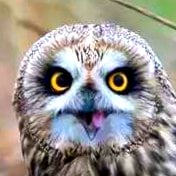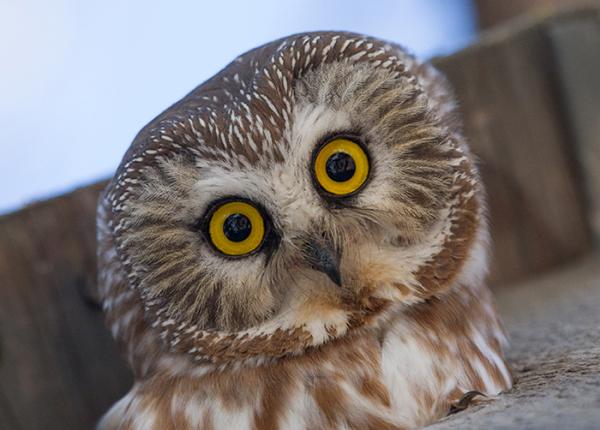From Ojai Raptor Center
Meet Great Horned Owl Patient 25-106
This beautiful, young juvenile male Great Horned Owl was found barely responsive, lying beneath a power line on the side of the road. Upon arrival at our wildlife hospital, our team quickly recognized the signs of electrocution-an all-too-common danger for raptors like this one. Many birds of prey are drawn to utility poles and power lines. These high perches give them a perfect view for hunting, but they can also be deadly. When a bird spreads its wings or touches two energized components at once, the result can be devastating.
Electrocution is one of the hidden threats raptors face-but we’re grateful for the partnerships working to change that. Southern California Edison (SCE) has been taking active steps to protect birds for decades. Since 1988, their Avian Protection Program has worked to mitigate the impact of its work on bird populations and other wildlife.
This is especially important during nesting season (March 1-October 31), when large nests built on electrical equipment can both endanger birds and cause outages. SCE’s specially trained crews relocate active nests onto custom-built platforms on the same pole or nearby, allowing birds to continue raising their young safely. A biologist remains on-site to ensure the parents return. If relocation isn’t possible or the nest is abandoned, SCE partners with wildlife rehabilitators like us to care for and eventually release the young birds back into the wild.
If you ever find a bird injured near a utility pole-or if you believe a pole may pose a danger to wildlife-call SCE to report it. Provide the pole number (usually printed on the side), and they’ll send someone out to investigate and, if needed, make modifications to help prevent future harm.
Patient 25-106 still has a long road ahead, and his prognosis is guarded, but he’s in the best hands possible. Your support has given him a second chance! Thank you to everyone who helps to make this work possible!
It’s good to know there’s a system in place to get these things fixed! I’m sure most local pet companies have something similar in place.


I can’t speak to all the duct tape here, because I’m not used to seeing the flat bits. If I’d be forced to guess, it’s possibly to secure the ends of the bandages from coming unraveled.
But that does highlight a fun thing in the one picture. I have a post in my backlog I’ll have to share about this again for the new followers here, but you can take a look at this little tab of tape here that just looks like it’s begging to be tugged on.
These get used by a lot of different rehabbers, and are usually called something like “distraction tabs.”
Birds can’t wear the cone of shame due to their head shape, so left to their own, they would pick at the bandages that are helping them heal. This would of course be bad, but what do we do about it?
There’s just one tab here, but there were likely more at one point. By presenting these easy to grab and fairly easy to rip off tabs of non-essential tape, the bird really gets to feel like it’s making real progress destroying the annoying bandage while it’s just tearing up sacrificial bits of tape instead of the actual bandage.
It’s pretty ingenuous and keeps the bird busy and away from the important stuff while it heals. Sometimes they are covered in a number of them and look quite funny.
Today I learned. You have a gift for getting a person (who never thought much about birds of prey at all) really interested in owls!
I always feel learning should be fun. We seem to accept that for children easier than for ourselves as adults. Before I started doing this daily, I liked owls, but didn’t really get into any deeper. But after doing so much research for posts, are they ever a wild bunch of animals with really interesting lives, anatomy so different to ours, and they are just so amazing to look at. Not a day hardly goes by without me coming across something I didn’t know or hadn’t seen before with them.
They’re not just mindless machines that hunt mice and make odd noises. They’re dangerous, funny, loving, adventurous, and sometime tragic characters living beside us. They’re just a few of the beautiful and amazing animals all around us we often don’t notice, and as wild and mysterious as they are, I want you to feel you’re part of the same world that they are, and that they should be valued and protected.
I’m glad you’re having a good time here with us, and it fills me with joy every day to see this group keep growing and to hear about all of you learning to love owls.